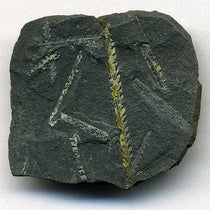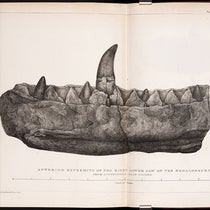Scientist of the Day - Thomas Streete
Thomas Streete, an English astronomer, was born Mar. 25, 1622, and died Aug. 27, 1689, at the age of 67. Streete grew up during a tumultuous age, when Parliamentarians in England battled against Royalists for a decade before the Parliamentarians won, Charles I was beheaded in 1649, the Royalists fled to the Continent, and Oliver Cromwell led the Protectorate until his death in 1658. The monarchy was restored in 1660 with the coronation of Charles II. Streete was 38 at the time of the Restoration. In 1661, he published his first real book, Astronomia Carolina (The Astronomy of King Charles), and dedicated it, not surprisingly, to the King (third image).
We don't know much about Streete before his 1661 book. He apparently was a clerk at the Excise Office. working for Elias Ashmole. He seems to have known most of the astronomers of his day and helped them make observations. The Astronomia Carolina was a fairly technical introduction to planetary astronomy, explaining how to determine all of the parameters of the planets. such as the eccentricity of their orbits, and then providing tables based on the parameters that Streete had determined.
The book had a wide impact, for not only was it thoroughly Copernican, it also introduced Johannes Kepler's first law (the ellipse law) and his third law (the period law) into English astronomy, at a time when many were Copernicans but few were informed about Keplerian ellipses and the relationship between period and orbital radius that constituted Kepler's third law. Isaac Newton would use Kepler’s third law to determine that the law of gravitation is an inverse square law, and he learned about Kepler's third law from the Astronomia Carolina. Other astronomers such as John Flamsteed, England's first Astronomer Royal, would praise the tables in Streete's book as the most accurate available. The book was so much in demand that it went through three English editions by 1716, the last two edited by Edmond Halley, and it was translated into Latin by Johann Gabriel Doppelmayr and published in 1705, an edition we also have in our Library (fifth image).
In the 1661 edition, all the diagrams were woodcuts, and they were inserted in the text where needed, so you could refer to the diagrams while reading the text. In the 1705 edition, all the figures were converted to engravings. This sounds like a good move, since engravings are invariably sharper and more precise than woodcuts. But since it is difficult to print engravings and text on the same page – they require two different kinds of presses – the engravings in the 1705 edition were printed separately and bound in at the end, which makes them less useful and more difficult to find. We show the first engraved plate from the 1705 edition (sixth image), which is based on the woodcuts of the Copernican system and an elliptical planetary orbit from the 1661 edition, which we show as our fourth and first images.
The thing I like best about Streete is that he attracted the attention of John Aubrey, when Aubrey was making notes for his collection of intimate biographies that would become known as his Brief Lives. These were left at Aubrey's death as a manuscript mess, but various editors have attempted to assemble the notes into readable and coherent text. There is a recent edition of 2015 that is highly praised, but neither I nor the Library owns it, so I use my old paperback edition, edited by Oliver Lawson Dick (1962). Aubrey's one-page bio of Streete as reconstructed by Dick appears on p. 284. What follows constitutes about two-thirds of Aubrey’s entry on Streete:
Anno 1661, he printed that excellent piece of Astronomia Carolina, which he dedicated to King Charles II, and also presented it well bound to Prince Rupert and the Duke of Monmouth, but never had a farthing of any of them.
He made attempts to be introduced to King Charles II and also to King James II, but Courtiers would not doe it without a good gratuitie.
He was of a rough and cholerique humour. Discoursing with Prince Rupert, his Highness affirmed something that was not according to Art; sayd Mr. Street, Whoever affirmes that, is no mathematician. So they would point at him afterwards at Court and say there’s the man that huff’t Prince Rupert.
No man living haz deserved so well of Astronomie.
You will find portraits of a Thomas Street in the National Portrait Gallery, but those depict a contemporary judge, not our astronomer. So far as I know, there is no portrait of our Thomas Streete, except the one in words, crafted by Mr. Aubrey.
William B. Ashworth, Jr., Consultant for the History of Science, Linda Hall Library and Associate Professor emeritus, Department of History, University of Missouri-Kansas City. Comments or corrections are welcome; please direct to ashworthw@umkc.edu.












